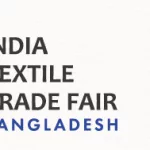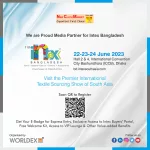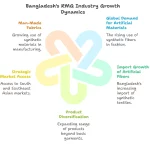 Bangladesh Ready-Made Garment (RMG) industry accounted for about 9.3% of GDP in the fiscal year through June 2022. The sector also made up 82% of total exports last calendar year, earning $45.7 billion, an amount exceeding the country’s FX reserves of $34 billion at the end of 2022. Remarkable, indeed! However, the flip side of the shining RMG exports of Bangladesh is the country’s reliance on imported raw mate- rials. For example, imports of yarn, cotton, knitted and woven fabrics, dyes and chem- icals among others. Textile mills in Bangladesh purchased yarn worth US $ 2.66 bn in six months during Jan-June 2022, accounting for 76 per cent of the total import value of US $ 3.5 bn in the previous year. Further, US $ 2.21 bn worth of woven fabrics was imported in the first half of this year, representing nearly 70 per cent of the item procured in 2021, while the country’s knitters, reportedly, bought fabrics worth US $ 1.29 bn in the first half of 2022 from international sources (US $ 2 bn spent in 2021).
Bangladesh Ready-Made Garment (RMG) industry accounted for about 9.3% of GDP in the fiscal year through June 2022. The sector also made up 82% of total exports last calendar year, earning $45.7 billion, an amount exceeding the country’s FX reserves of $34 billion at the end of 2022. Remarkable, indeed! However, the flip side of the shining RMG exports of Bangladesh is the country’s reliance on imported raw mate- rials. For example, imports of yarn, cotton, knitted and woven fabrics, dyes and chem- icals among others. Textile mills in Bangladesh purchased yarn worth US $ 2.66 bn in six months during Jan-June 2022, accounting for 76 per cent of the total import value of US $ 3.5 bn in the previous year. Further, US $ 2.21 bn worth of woven fabrics was imported in the first half of this year, representing nearly 70 per cent of the item procured in 2021, while the country’s knitters, reportedly, bought fabrics worth US $ 1.29 bn in the first half of 2022 from international sources (US $ 2 bn spent in 2021).
Globally, the share of cotton textile and clothing consumption is 25 percent only. Currently, 75 percent of Bangladesh’s RMG products is within cotton items. The de- mand for man-made fiber (MMF) based garment items is on the rise in the global market due to the growing awareness for sustainability. BGMEA wants to increase MMF usage leading to competition between India and China for its MMF demand.
Bangladesh enjoys a well-connected international community and has presence of their representatives locally who have been instrumental in modernizing Bangladesh RMG sector. One important feature to be noted is that in most cases non-government trade body Bangladesh Garment Manufacturers and Exporters Association (BGMEA) is at the helm of affairs and represents the country at all international fora. So, they can work in a cohesive manner with one single point for sourcing, monitoring and implementing with or without the government involvement.
A high-level delegation of the BGMEA (read Bangladesh), headed by its President Mr. Faruque Hassanwas, was in India from 9-12 February. They visited Surat and held talks with officials of the Confederation of Indian Textile Industry (CITI) to increase trade relations and overcome the issues being faced (see page 73). It is interesting to analyze talking points of CITI-BGMEA meeting and tracking BGMEA’s visit plan.
CITI chairman said: “India has the potential to increase its textile exports to Bang- ladesh from US$ 4.2 bn (current) to about US$ 15 bn in next 3-5 years. India need not set new capacities for the same. There is already about 20-50% of idle capacities in fabric mills and processing houses which can be effectively deployed in a faster and shorter period by using the Tech Gateway Integration platforms such as of Sowtex.”
- Why Sowtex -a private B2B digital sourcing platform when trade associations/government departments/agencies have so many B2B portals?
- What message the BGMEA gets when you say: “There is already about 20-50% of idle capacities which can be deployed to fulfil demand from Bangladesh?
- It is interesting to note the BGMEA delegation’s visit to Bangladesh High Commis- sioner to India to seek support to boost trade with India!
- It is more interesting to see that the BGMEA delegation – after India visit (9-12 Feb) – paid a courtesy call on Ambassador of China to Bangladesh on Feb 13!
It is important to interact with Bangladesh on any trade talks very carefully, fully prepared and with an integrated approach among various trade bodies. BGMEA can play a role model if we sincere wish to upgrade and be relevant. Bangladesh being our customer, supplier and also a competitor needs to be dealt with professionally without undermining its Garment Valley of the World status and proximity with China!
GD Jasuja
Managing Editor





